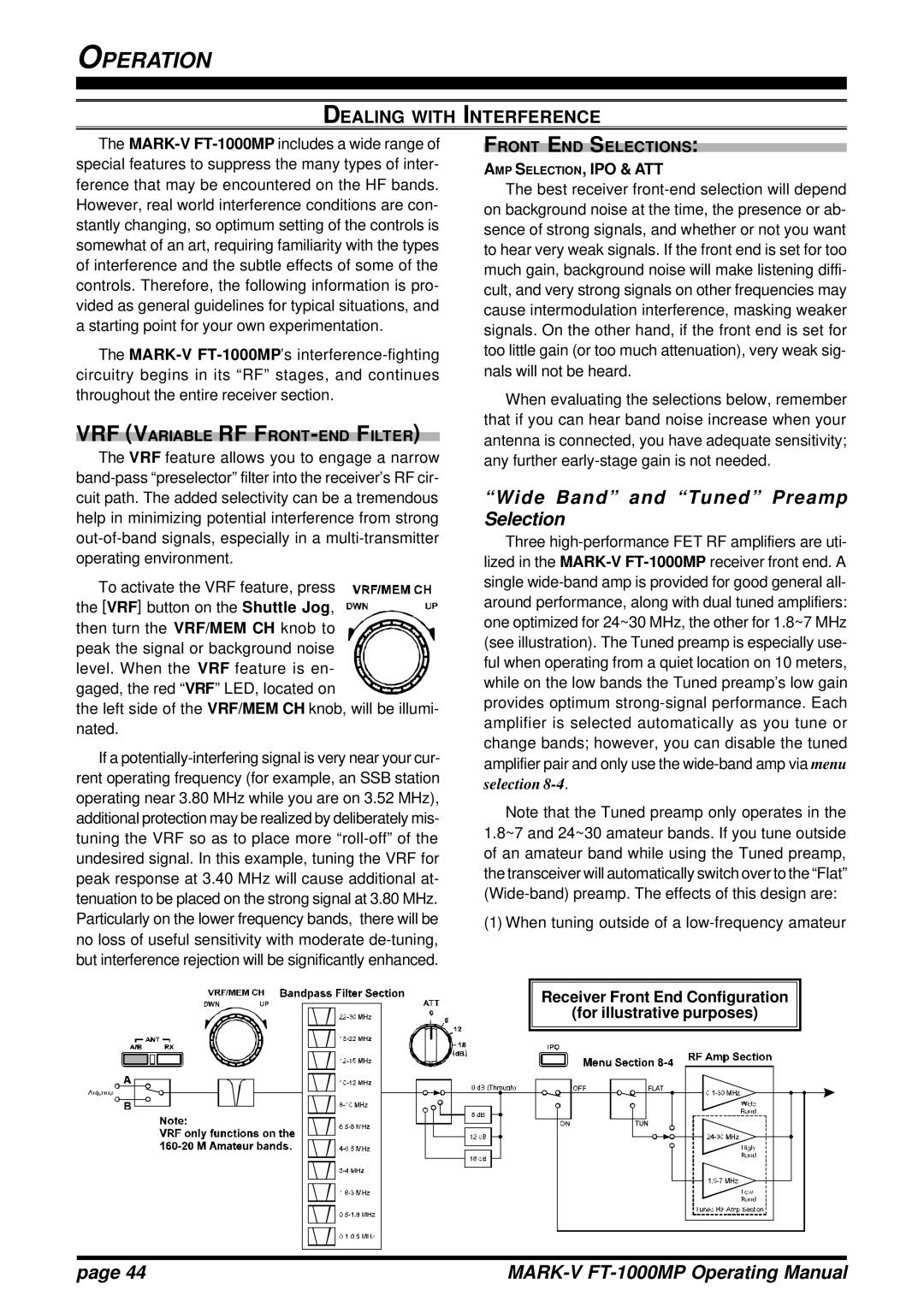
OPERATION
DEALING WITH INTERFERENCE
The
The
VRF (VARIABLE RF FRONT-END FILTER)
The VRF feature allows you to engage a narrow
To activate the VRF feature, press ![]()
![]()
![]()
![]()
![]()
![]() the [VRF] button on the Shuttle Jog,
the [VRF] button on the Shuttle Jog, ![]()
![]()
![]()
![]()
![]()
![]() then turn the VRF/MEM CH knob to
then turn the VRF/MEM CH knob to ![]()
![]()
![]()
![]()
![]()
![]()
![]()
![]()
![]()
![]()
![]()
![]()
![]()
![]()
![]() peak the signal or background noise
peak the signal or background noise ![]()
![]()
![]()
![]() level. When the VRF feature is en-
level. When the VRF feature is en- ![]()
![]()
![]()
![]()
![]() gaged, the red “VRF” LED, located on
gaged, the red “VRF” LED, located on ![]()
![]()
![]()
![]()
![]()
![]()
![]()
![]()
![]() the left side of the VRF/MEM CH knob, will be illumi- nated.
the left side of the VRF/MEM CH knob, will be illumi- nated.
If a
FRONT END SELECTIONS:
AMP SELECTION, IPO & ATT
The best receiver
When evaluating the selections below, remember that if you can hear band noise increase when your antenna is connected, you have adequate sensitivity; any further
“Wide Band” and “Tuned” Preamp Selection
Three
Note that the Tuned preamp only operates in the 1.8~7 and 24~30 amateur bands. If you tune outside of an amateur band while using the Tuned preamp, the transceiver will automatically switch over to the “Flat”
(1) When tuning outside of a
Receiver Front End Configuration
(for illustrative purposes)
page 44 |
|
